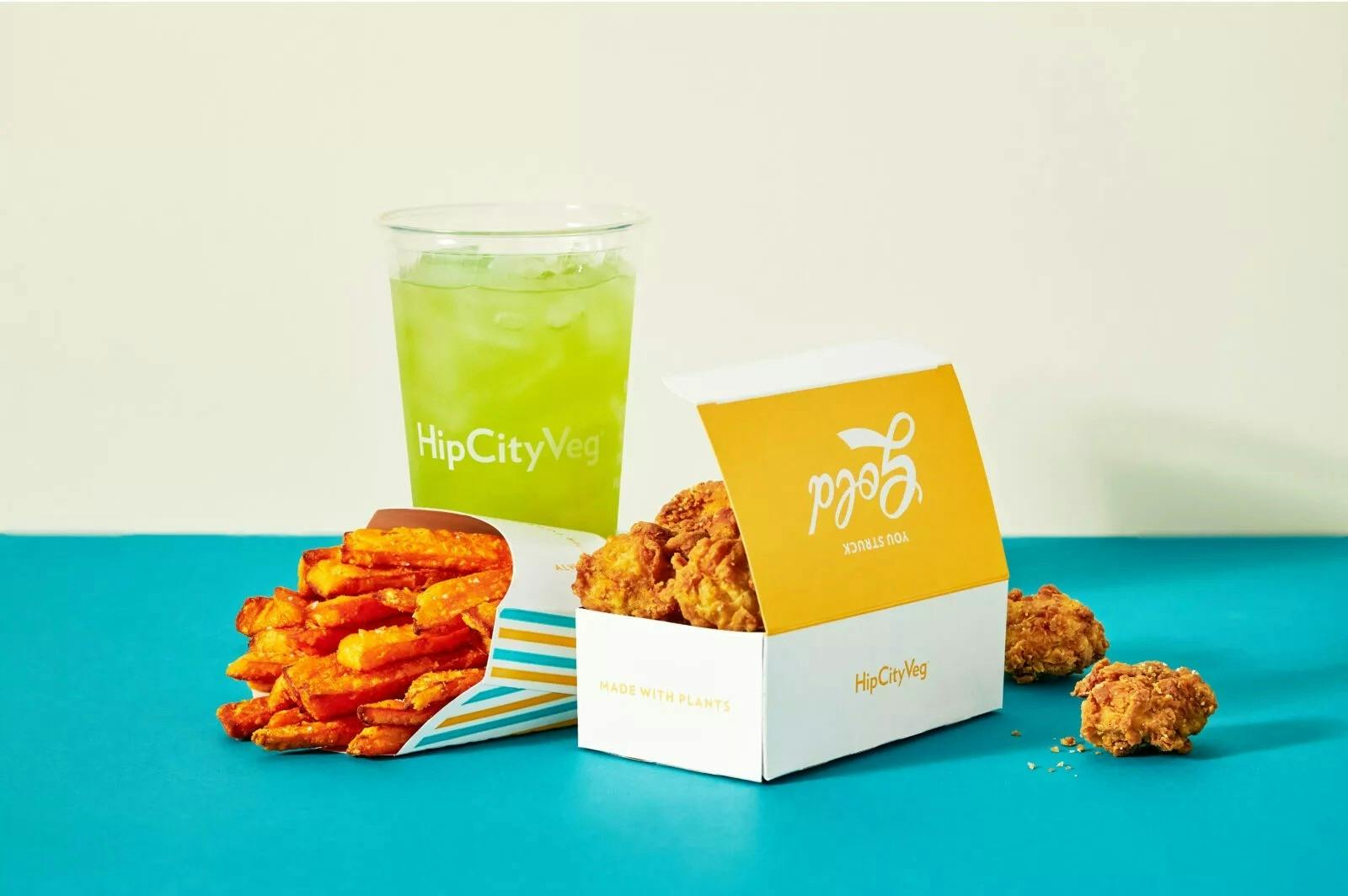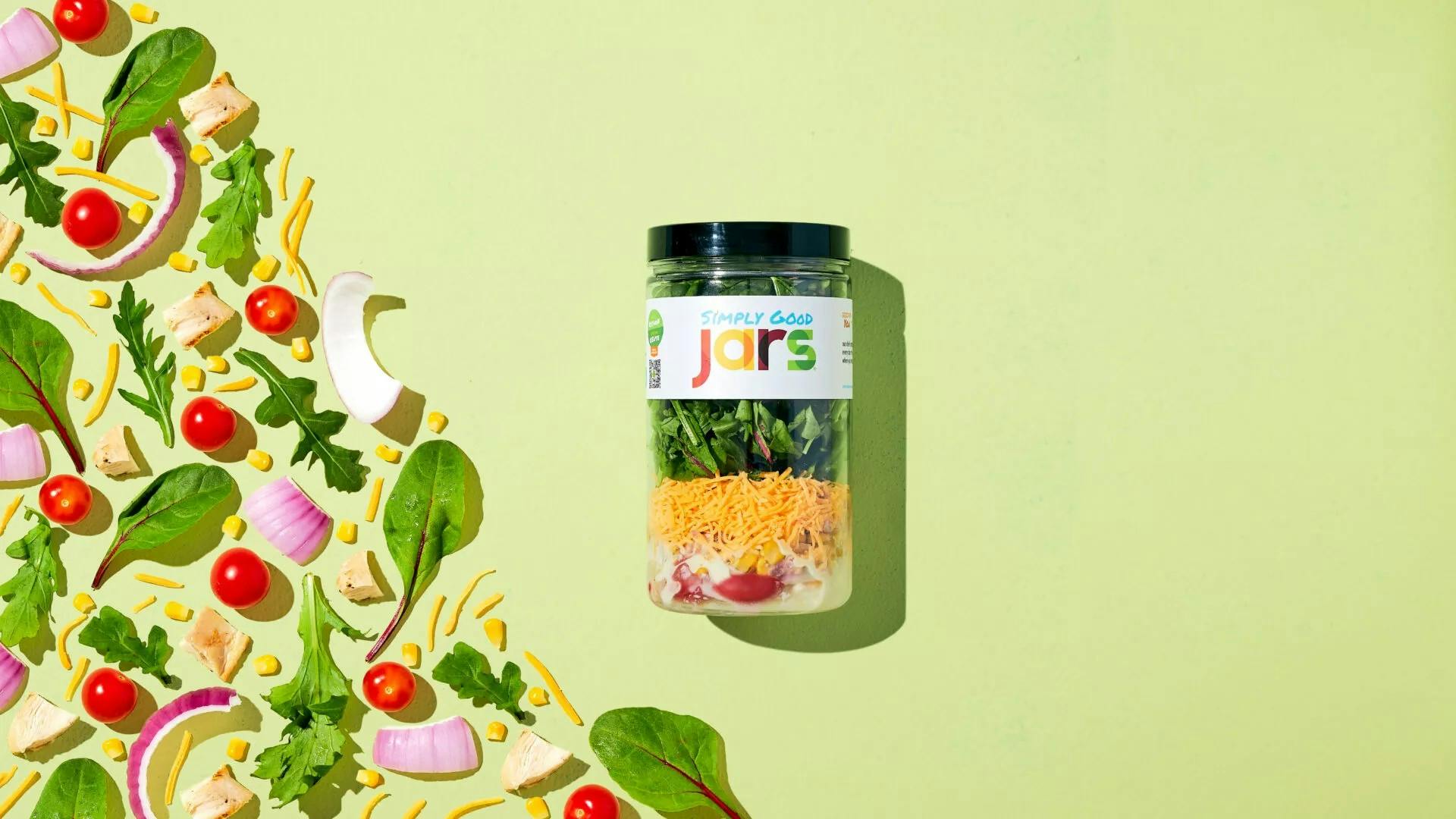Packaging is the customer’s first impression of a product
It’s our job to make sure the packaging looks as great as the food inside it tastes.
Every element of the packaging – from its color palette to the materiality and message behind it – tell a story before a bite is even taken. Our restaurant friends come to us with the need to articulate their brand differentiators in a single take-out moment. Now more than ever this is one of the significant ways someone interacts with and shares a restaurant brand.
It All Starts with Story
We start with the story behind the brand and their takeout and packaging goals. For HipCityVeg’s vegan fast food brand with many locations in DC and Philly, that meant returning to the nostalgic feeling of family meals at classic fast food chains, while incorporating a more modern and hip take on their popular plant based version of burgers and fries.
Environmentally friendly packaging is a key component with many brands, as consumers are eating more takeout than ever before. Most consumers are more conscious about plastic waste, and therefore we've found it is important to aim for cardboard, compostable and locally produced whenever possible. The messaging of your brand's packaging efforts is also key to communicate to customers on the packaging and in regular marketing content. Pairing the right message with the right packaging and content, and you begin to build awareness without compromising on values.
Finish with Good Content
We joined forces with some great photographers and stylists to create animated stop motion ads, gifs and photography assets that help drive traffic to increase sales for the restaurants. Without this fun approach to restaurant packaging strategy, no one sees or is encouraged to share the fun elements of your packaging. We won a GDUSA award for best packaging in consumer products in 2019-2020 for this work.
HipCityVeg packaging was chosen over big brands like Hidden Valley Ranch, Cheerios, Kellogs etc. We chose their work as the cover of the awards publication because it made us smile - GDUSA
DK Sushi Takeout Packaging Design
Born from the underground izakaya at Double Knot comes DK Sushi: A fine casual experience from Schulson Collective. DK Sushi offers a chef-driven menu of fresh, hand-rolled sushi to dine in or carry away. With individual rolls and specialty boxes, this is a high quality sushi experience offered in a casual, contemporary setting. We refined the dining experience into a smaller footprint fast casual food hall, situated on the University of Penn campus. Packaging was a key component so that students feel like they are eating the high-end restaurant experience at home.
Simply Good Jars Packaging Design
Simply Good Jars, which launched a brand new grab-and-go offering at Di Bruno Bros. and retailers across the region, has welcomed us into their family – and vice versa. We are now committed to providing strategic branding support and web design and development to help push their brand to the next stage. Along the way, we’ll have skin in the game and live with the product every day in our Philadelphia office. This kind of close relationship could not have come from a simple service-provider model. While we can and will execute on tangible deliverables in the near-term, it’s the long-term that inspires us to create value and push each other to be better brands.
We've been featured on DesignRush as on of Philadelphia's top packaging design agencies, for more on packaging trends click here.
Cohere tackles the design, sourcing, coordination, and production of brand packaging for any type of restaurant. From menu design to takeaway containers, our agency can create it. Get in touch.



